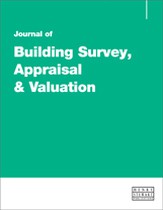Integrating non-destructive techniques into the scientifically robust assessment of vulnerable historic masonry: Case studies on Reigate Stone
Abstract
This paper summarises a scientific methodology for assessing masonry decay, developed over the course of a four-year research project on Reigate Stone at the Tower of London and Hampton Court Palace. Reigate Stone is a vulnerable building stone with a complex history of use, high cultural value and poorly understood decay processes. The Tower of London and Hampton Court Palace, managed by Historic Royal Palaces, contain a large amount of Reigate Stone masonry. As such, these important historic sites provided a range of different case studies for investigating Reigate Stone decay. Masonry decay is increasingly being understood in terms of complex system dynamics, in which the interactions between primary building stone, replacement stones, mortar and invasive agents of anthropogenic or environmental origin are as important as the nature of the building stones themselves in controlling non-linear response to environmental mechanisms. Integrating this diverse set of variables significantly increases the complexity of scientifically robust stone conservation. Non-destructive techniques (NDT) play an important role in addressing this complexity, but in order to make sense of the data they capture, it is vital to appreciate different scales of investigation and distinguish between rapid and in-depth protocols.
The full article is available to subscribers to the journal.
Author's Biography
Martin Michette DPhil is a researcher on the historic built environment at the University of Oxford’s School of Geography and the Environment. His research focuses on natural building materials, historic architecture and urban resource management. He works in close collaboration with non-academic partner organisations such as Historic Royal Palaces and English Heritage to perform surveys and develop conservation strategies for high-profile buildings and sites. Besides the Tower of London, he is currently also involved in projects at Pompeii and Petra. Martin is a member of the Oxford Resilient Buildings and Landscapes Lab (OxRBL), a group of researchers and practitioners who identify and promote synergies between building technologies, cultural heritage and natural systems as a means of improving environmental resilience. He completed his doctoral studies in June 2020, and also holds degrees in architecture and building conservation.
Citation
Michette, Martin (2021, December 15). Integrating non-destructive techniques into the scientifically robust assessment of vulnerable historic masonry: Case studies on Reigate Stone. In the Journal of Building Survey, Appraisal & Valuation, Volume 10, Issue 3. https://doi.org/10.69554/MUCB8327.Publications LLP
